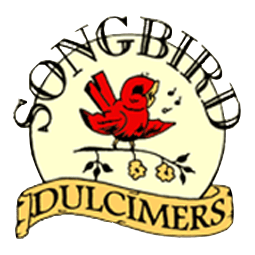March 26, 2022
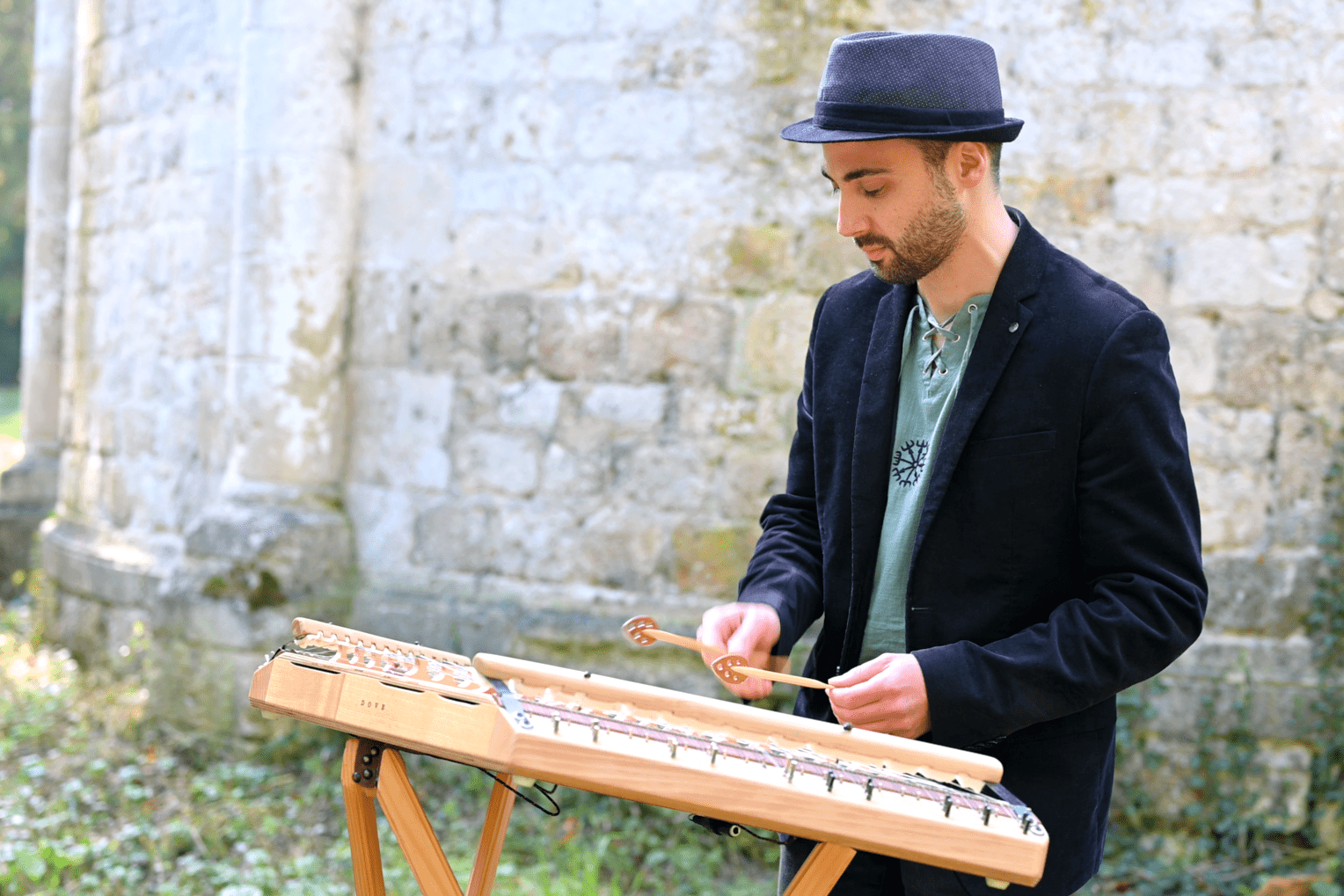
By Nicolette Foss
We did a series of Zoom interviews with Val Cortoni, a French poly-instrumentalist, songwriter, and sound engineer. Val focuses on the integration of old-world acoustics with modern production techniques.
Val Cortoni’s repertoire on the hammered dulcimer includes everything from Celtic to baroque to death metal and video game themes. His covers are varied, while his own compositions often center on the newly-evolving synth-folk genre.
We discussed his musical interests, influences, as well as recording and mixing the hammered dulcimer. Stay tuned to see what Val Cortoni is up to…
Digital Musician Goes Acoustic
In our 7 Types of Hammered Dulcimers Around the World post, we talked about the relatively short lifespan of the tympanon or dulcemele in France. So how did you come across this relatively extinct instrument in your country?
Val: Luck! One day in my mid 20’s, my grandma handed me some salvaged toy zither she found in her closet. I immediately fell in love with the pristine tone of this little instrument, quickly went over it and looked for larger alternatives. My research brought me from zither to psaltery to hammered dulcimer. I heard Dizzi’s and Ted Yoder’s recordings and was mesmerized by the tone of it.
But also frustrated, as I had absolutely no idea where to try and purchase this instrument in France.
By incredible chance a few weeks later, a remote uncle I met at a family party told me he had a Roger Frood 12/12 for sale. That’s how I got my first Hammered Dulcimer.
What is the hammered dulcimer music scene like in France today?
Val: We’re not many players, I have knowledge of a few across the country that use hammered dulcimer as their main instrument, and there are probably more musicians that use it as a secondary instrument in their sound palette.
I know only one hammered dulcimer/psaltery maker that does it as his main activity: Claude Bertrand, who makes very fine instruments inspired by Roger Frood’s designs. He demonstrates them at Early Music festivals, where I met him the first time.
What other instruments do you play?
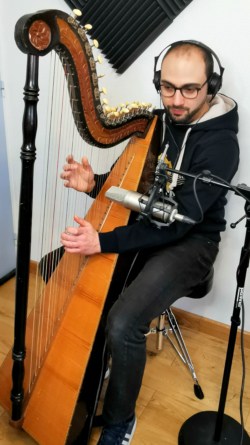
Val: I started keyboards/synthesizers in 2004 as a teenager and still play them today; although I was mostly self-taught by ear and hit a “glass roof” quite quickly. I also started computer music around the same period, when multitrack recording softwares (DAW) were becoming more and more accessible on personal computers. I can really say that technology is and will remain an important part of my creations.
I also play a bit of percussion, melodica, celtic harp, zither, and bowed psaltery, mostly to enhance my recordings with simple accompaniment.
What are some of your biggest musical influences?
Val: My dad used to cradle me with Deep Purple, Kraftwerk and Emerson, Lake & Palmer, which started shaping my penchant for hard rock and synthesizers quite early. As a teen, I purchased a cheap synth and started a band with my electric guitarist friend. This friend introduced me to lots of heavy metal bands that I still consider as references today, like Children Of Bodom, Rammstein, Rage Against The Machine…
During my 20’s, I became more and more attached to baroque music, especially the harpsichord repertoire. I also discovered Mike Oldfield, Dead Can Dance and saw Loreena McKennitt play live in Paris, which had a huge influence on my songwriting as well.
My current music is somewhere between all these influences.
Many of your covers are from video games.. What are some of your favorite video games?
Val: I’m a total retro nerd and I feel overwhelmed when a controller has more than 4 buttons 🙂 More seriously, my favorite games are the ones that bring me as far as possible from today’s crazy life, like the medieval and/or fantastic genre (the oldies from Zelda & Final Fantasy series, Age Of Empires, Heroes Of Might & Magic), or the Sci-Fi genre (Star Wars series, or Unreal Tournament 99’ after a bad day).
After so many years playing electronic instruments, what draws you to the hammered dulcimer?
Val: In my mid 20’s I felt my music experience was missing a certain degree of spontaneity and imperfection, electronic instruments despite their absolute versatility lack a certain character, plus they need a power cord. As a starting point I had this toy zither I really liked, and was looking for some ancient instruments from the same family. Medieval psalteries & hammered dulcimer were good candidates as their layout is not too hard to apprehend coming from the keyboard world.
I first expected hammered dulcimer to be a cool medieval-ish addition to my sound palette, but quite soon I got caught and it became much more, up to the point I consider it today as my main instrument.
Tell us a bit about the history of your hammered dulcimer..
Val: My current hammered dulcimer is a Roger Frood 4-13-13-6 chromatic dulcimer.
When I started taking regular lessons, I also discovered a fantastic classical and baroque dulcimer repertoire, and understood my original 12-12 dulcimer didn’t have enough range and accidentals to play all of this.
I considered purchasing some large American chromatic model like Songbird’s Finch Pro. Unfortunately it was early 2020, traveling to test dulcimers wasn’t an option and I was hesitant to choose based on video impressions. Besides, I really loved the crystalline tone of Roger Frood’s dulcimer.
By chance, again, I saw an advertisement on the Nonsuch Dulcimer website of a French person selling what would become my current dulcimer.
It was a kind of prototype as Roger Frood didn’t produce many chromatic dulcimers, but I saw it had a lot of potential and purchased it. Then I had it improved by French maker Claude Bertrand who added foot dampers and even a whole new chromatic course. It is now a composite design which is practical to play and has a lovely tone.
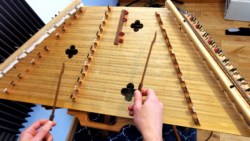
How did you learn to play the hammered dulcimer?
Val: I self-taught by ear between 2015 and 2019 and made quick progress as the layout made sense coming from the keyboard world. Then when I felt I was hitting the “glass roof”, just like I did with keyboards, I decided to take lessons.
The Facebook Hammered Dulcimer Players community gave great advice and recommended Mark Alan Wade as online teacher. I’ve been his student since 2019. I’m learning classical, baroque, celtic music, and much more. Mark is also very open to help on unusual projects I submit for learning, like video games or heavy metal music. I had to learn how to read music, which was one of the things I dreaded the most, but Mark made it progressive and fun.
What, in your opinion, is the best way for a beginner to learn hammered dulcimer?
Val: As I spent my first 15 years of music learning to play instruments by ear on my own; I can definitely say regular lessons with a good teacher who uses music theory is better in the long run. But if you’re disciplined enough (unlike me), there are more and more dulcimer books as well as songs/techniques tutorials online.
There are also festivals with lots of interesting dulcimer workshops (in person or online) that can help expand your knowledge of the instrument.
In parallel, it’s a good idea to meet and share experiences with other musicians -dulcimer players and others-, collaborate with them to get out of your comfort zone. As you progress, helping people around you to grow also gives perspective and consolidates your own skills.
Do you have a day job or are you a professional musician full time?
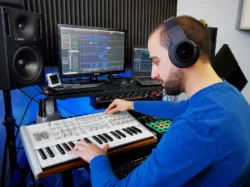
Val: Somewhere in between. I have a part-time day job and music activities the rest of the time.
My music activities are mostly studio works for other artists (recording, production, mixing…) as well as teaching studio technique and computer music private lessons.
More recently, composers have been hiring me for hammered dulcimer session recording for their projects. That’s really something I enjoy doing. I’m always positively surprised by the diversity of requests : from folk to video game soundtracks to unusual styles like experimental black metal or Hindi Bollywood. A bride even asked me to record music to walk down the aisle to!
That’s usually technically challenging because most of the clients, especially professional composers, love the sound of hammered dulcimer but don’t know about its specific limitations and may ask for difficult scales or parts, and it’s not always possible to propose a dulcimer-friendly edit. But getting out of my comfort zone is part of what makes it exciting!
Crystal Soul Arena (mobile game), Mountain theme by Haakon Davidsen (Norway):
https://haakondavidsen.bandcamp.com/track/mountain
https://open.spotify.com/track/0yeJ9GrmlRWWaSIciRxcAp?si=ce75809e0f41413e
Where does your inspiration for songwriting come from?
Val: I get inspiration by traveling, contemplating landscapes, visiting historical sites like castles, ruins… these places make me full of emotions I cannot express with words. Then home is ultimately the only place where I can turn these emotions into music. I admire musicians who just sing audio memos to their phones in the street, or write down tabs on paper in the train.
You and musicians like The Lady Victoria are pioneering the synth folk genre with the hammered dulcimer. What draws you to this type of music?
Val: I never really thought about it, to me it’s a very natural form of expression, as synth/technology and hammered dulcimer are core elements of my music identity.
I already heard renowned artists doing similar things on specific songs, like Loreena McKenitt, Enya, Kitaro, or more recently Omnia or Wintergatan, but they’re labeled as “New Age” or “World music” as most of their repertoire is.
So I brainstormed with friends and concluded Synth-Folk would work nicely in my case. We also thought about “Hard New Age” but it sounded really comical 🙂
Your 2020 debut synth-folk EP “Nomade” can be found on music streaming services and Bandcamp. Tell us a bit about it:
Val: Nomade is the very start of my dulcimer Synth-Folk journey. It is a collection of six original recordings I did between 2016 and 2019 and compiled as a self-produced EP early 2020.
Most of these tracks were composed in the scope of internet challenges. Two of these tracks are actually collaborations with randomly assigned music partners, this was a lot of fun !
I released youtube videos for Les Cargos du crépuscule featuring Swiss musician Pascal Girod, and on McLeod’s Song where I’m also playing electronic keyboards, drum and harp.
What can we expect from your first album Corélian, set to release on March 24, 2022?
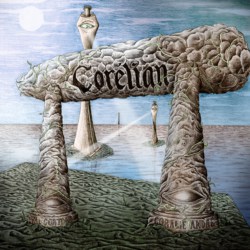
Val: The Synth-Folk journey keeps on going, my songwriting has improved and I learned how to turn my creative thoughts into fully produced songs in a more personal way. This new album features eight tracks : seven originals and one traditional Irish ballad from Turlough O’Carolan.
A lot of credit goes to my dear friend Coralie André who, besides her angelic soprano voice and extremely supportive attitude, brilliantly gave a meaning to this album by proposing singular stories and lyrics using both modern and ancient languages (French, Breton, Gaulish).
Of course you can expect to hear a lot of hammered dulcimer as it is the central thread in the album. Most of the time the hammered dulcimer tone is kept natural, without too much processing, as the synths & other electronic instruments are here to bring a more modern touch to the production.
I fully recorded and mixed the album in my home studio in the suburbs of Paris.
One word about the album cover which is a pencil drawing by my dear friend Paul Naassan from Paris. He used his unique sci-fi / surrealist touch to represent the mix between ancient instruments/languages (the old dolmen megalith with closed eyelids) and modern music production techniques (the futuristic lighthouses in the background which are awake).
Your original composition Arvorig (debut single on Corélian) is a whole vibe. The setting was filmed at an ancient French abbey whose name was lost over the centuries, with lyrics sung in an unknown language. Can you tell us a bit about how this haunting piece came together?
Val: As you said Arvorig is Corélian’s first single, there were other candidates to introduce the album and they will eventually have music videos too, but Arvorig really felt like a good choice because it is representative of the album’s general atmosphere, and short enough to do a self-produced music video. We released the music video in December 2021 and received heart-warming feedback.
Just like the rest of the album, Arvorig blends hammered dulcimer and ancient celtic languages with electronic instruments and modern production techniques.
The lyrics are about Armorica (Celtic region of France, in Brittany) and tell of its people’s ways.
The original theme for this music came right after my road trip in Ireland, as I felt so inspired by their beautiful country and culture. When I came back to France I immediately asked my friend Coralie, who I knew was a soprano choir singer, if she’d accept to record her vocals on this song. It went so well we ended up doing a whole album of these !
Do you have any tips for studio recording the hammered dulcimer?
What kind of program do you use for mixing hammered dulcimer music, and can you give us a demo?
In your opinion, is there a place for hammered dulcimer in our technology-driven future?
Val: There is a development potential for dulcimer and more generally European folk instruments nowadays. You can hear these becoming quite popular in neo-folk and pagan music scenes, as well as movie and video game soundtracks. Hurdy-Gurdy is probably the most representative example of this trend.
However trends come and go. In my opinion what is important for hammered dulcimer to grow is of course appealing to new audiences with exploration works, but at the same time consolidate foundations, develop unified learning methods and keep on expanding the classical and traditional repertoire. Our dulcimer community has been able to quickly react to the pandemic, and I feel now dulcimer learning is more accessible than ever, so I’m quite optimistic on that!
Where to find Val Cortoni:
- Official synth-folk project (Corélian album and Nomade EP):
- All dulcimer videos (compositions and covers): YouTube
- Contact Val by email for any inquiries, including assistance with music production: val.crtx@gmail.com
 About the author/interviewer: In her childhood, Nicolette Foss could be found underneath piles of sawdust in her father’s hammered dulcimer workshop. She helped with odds and ends in the business, attended folk music festivals, and learned the importance of hard work. These days, you can find her belly dancing to instrumental Arabic music, learning the Serbian language, making short films with friends, and cuddling her cat Georgie. If you’d like to hire Nicolette for content writing or copywriting work, contact her at: nicolettelady@protonmail.com
About the author/interviewer: In her childhood, Nicolette Foss could be found underneath piles of sawdust in her father’s hammered dulcimer workshop. She helped with odds and ends in the business, attended folk music festivals, and learned the importance of hard work. These days, you can find her belly dancing to instrumental Arabic music, learning the Serbian language, making short films with friends, and cuddling her cat Georgie. If you’d like to hire Nicolette for content writing or copywriting work, contact her at: nicolettelady@protonmail.com
